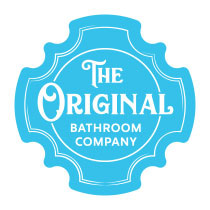Wet Room vs. Walk-In
Which is the best shower option?
When it comes to designing a bathroom, one decision a lot of our customers take some time to consider is the choice between a wet room or a walk-in shower. Both offer a beautiful aesthetic and have their advantages and considerations that can significantly impact the functionality and style of your space. Let’s explore some key differences and weigh the pros and cons of each to help you consider all factors.
Wet Rooms
A wet room is defined by its waterproofed or tanked design, where the shower tray and waste are concealed beneath the tiled flooring, creating a seamless and open entry into the shower area. They look stunning and create an immersive bathroom experience but they do have some possible disadvantages to consider.

Here are some notable pros and cons:
Pros of Wet Rooms
Accessibility: The absence of a step-up makes wet rooms particularly advantageous for individuals with mobility issues, the elderly, or those using wheelchairs. The seamless transition enhances ease of use.
Minimalistic Aesthetic: Wet rooms exude a sleek and minimalistic aesthetic, making them an excellent choice for contemporary, modern bathroom designs.
Space Saving: In small bathrooms, wet rooms shine as a space-saving option. The fully tanked design eliminates the need for large enclosures, all you need is a small piece of glass to protect any furniture/cabinets you may have in the room.
Cons of Wet Rooms:
Cleaning Challenges: Continuous water exposure to grout can lead to the buildup of dirt and damp, posing cleaning challenges over time.
Leak Susceptibility: Wet rooms, especially those installed on wooden floors, may be more susceptible to leaks. Proper installation with a floor former is crucial to mitigate this risk.
Maintenance of Accessories: Items like towels, accessories, and cabinets may require more effort to keep clean, especially if only a small piece of glass separates them from the shower area.
Walk-In Showers
A walk-in shower, on the other hand, features a shower tray that sits on the tiles or flooring, typically with a glass enclosure.

Here’s a closer look at its pros and cons:
Pros of Walk-In Showers:
Accessibility: A well-designed walk-in shower with a low-level tray or one sunk into the floor provides good accessibility. Some manufacturers, such as Matki offer flush-with-the-floor trays, adding a touch of sophistication.
Easy Maintenance: In comparison to a wet room, without grout on the floor, walk-in showers are easier to clean. Properly installed trays also reduce the risk of leaks, enhancing overall maintenance.
Variety in Design: Walk-in showers come in various designs and are very flexible with a wide variety of options. There are choices of fixed glass panels or hinged panels and various tray materials allowing customisation based on space and aesthetic preferences.
Cons of Walk-In Showers:
Space Requirements: To achieve a clean and open look with fixed glass, a certain tray size is necessary. This may take up more space in the bathroom compared to wet rooms.
Heat Retention: Unlike enclosed showers that retain steam, walk-in showers may not hold heat as effectively, resulting in a cooler experience once you step away from the water. The same can also be said for a wet room.
So, which to choose?
Both wet rooms and walk-in showers have their advantages and are a beautiful addition to your bathroom. If space-saving is a top priority, a wet room might be the perfect fit.
However, if space is less of an issue, then a walk-in shower offers you the benefits of a wet room, without the potential hassle, especially if you were to go for a slate tray. They come in various different colours, so you can blend the tray in with your tiles.
Interested to find out more? Visit our showroom to explore the various options and discuss with the experts!

